Marking and Manageability (and why aren’t more people trying RAG123?)
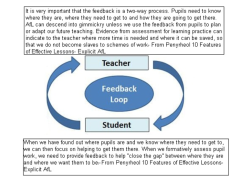
This is (in theory…) a short blog just to gather my thoughts on marking, impact and manageability. I am in the process of producing a new draft feedback policy to present to the SLT after half term. Other than the fact that I am working on a new feedback policy there are a few other reasons why I wanted to gather my thoughts. We had an outside speaker in on the Friday before half term (on restorative practice) and he asked if I would visit his school to present how I mark using RAG123 (for what RAG123 is then try this by the “father” of RAG123 @ListerKev or this from me). This is the second local school that have asked me to visit. I said I would be delighted to visit after half term but I admitted that not many of our own staff actually employ RAG123 as a marking strategy. I want to reflect on why RAG123 has not been more widely adopted or at least trialled (and how it could be used as one of a range of feedback strategies).
I fully appreciate that marking has always been a big issue because it can give pupils and teachers fantastic feedback on learning but it can also be a HUGE task in terms of time consumption. As I am writing, this blog has appeared on my timeline by @TeacherToolkit. The feedback policy I am working on has a few principles that marking needs to adhere to (such as a focus on “closing the gap”) but within that departments are free to decide what that looks like in their area (as long as it is manageable and effective).
In a recent HODs meeting we were discussing learning intentions and I made the point that a) all pupils should know what they are supposed to learning in the lesson and b) pupils should have some idea by the end of the lesson whether or not they’ve been successful. I don’t see anything contentious with those statements. This means we have to be crystal clear with our students about what they are learning about and then formative assessment during the lesson should inform pupils (and the teacher) whether they are being successful with regards to stated outcomes. This is from Estyn’s end of year report: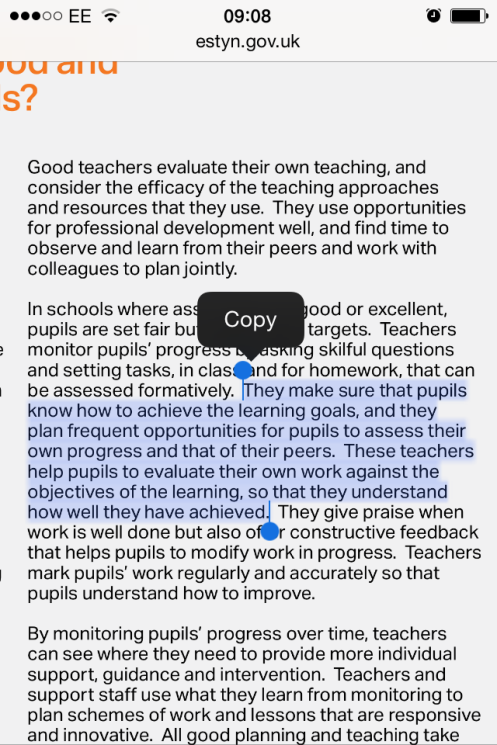
RAG123 marking makes this implicit. With clear learning outcomes being planned first and then learning activities being planned second, tasks can be designed to allow ease of self/peer assessment against the learning outcomes. This process means pupils find giving their “learning” a RAG rating much easier because of the formative assessment prevalent which helps them gauge how successful they’ve been. An example would be here (this “lesson” was spread over 2 lessons):
Pupils had to work with 4 inference grids (2 with graphs and 2 with written information from Cancer Research and a Daily Express article), here are 2 of them:
Pupils made notes on their “What I Know”, “What I can infer” and “What I want to question” on an A3 sheet:
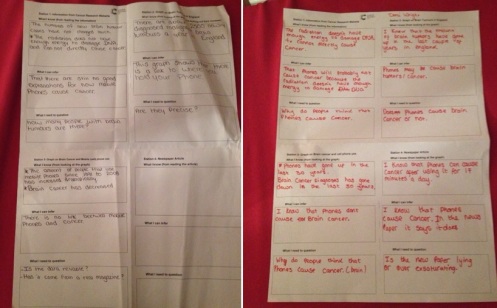
They then used this to write an “ask Jeeves” response on whether mobile phones cause cancer or not. Pupils used their inferences and their further questions (which helped them evaluate the evidence) to write their response. By putting the “so that” outcomes on the board while they were working on their responses it was clear that they needed to fully justify their position using their reading of the evidence and their evaluation of the evidence.
This is some of the work from my Violet group (set 4/4).
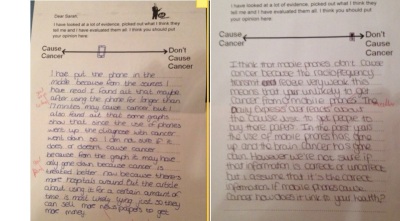
We then undertook gallery critique and pupils gave each account a mark out of 10 (up to 3 marks for use of evidence- 1 mark per citation; up to 2 marks for the evaluation of the evidence- 1 mark for each comment which judges the quality of the evidence and finally 5 marks for how persuasively they justified their position- a very subjective assessment which is why gallery critique was more appropriate than straight peer assessment). Once their work had been assessed by three of their peers they self assessed against the same criteria. Then the pupils had to RAG123 and the RAG was against the intended outcomes. The outcomes were very challenging and the vast majority of pupils gave themselves an A1 because they could see they hadn’t used enough evidence to justify their position or they hadn’t critically evaluated the evidence with enough thought.
The long winded point I am trying to make is that because the task is linked to the outcomes then pupils know at the end of the lesson whether they have been successful or not. I know if they have been successful or not. My marking consisted of a quick read through their Dear Jeeves task and a RAG123 rating that invariably mirrored the pupils. I usually did not need to add comments because pupils had highlighted why they were an A rather than a G. The following lesson would have been an excellent opportunity to redraft but we had only recently redrafted a 6 mark QWC question and curriculum time is already being stretched.
RAG123 marking works for 2 main reasons. I really like this feedback loop from @shaun_allison’s blog which I have adapted to include excerpts from our “10 features of effective lessons guidance”.
RAG123 gives feedback to the pupils (via their own self assessment and from the teachers). RAG123 is also a manageable way for me as the teacher to see their work regularly (up to every single lesson). The insight this gives my planning based on the progress and misconceptions of all my learners is incredibly powerful.
Another reason for writing the blog is my memory of doing a book scrutiny in the past and seeing a book that hadn’t been marked for over 20 lessons. What surprised me was the work was very well presented. Despite it not being marked the pupil had taken pride in her work. The troubling thing for me was how did this pupil know if the work they had produced was right? How would they or the teacher know that misconceptions were being picked up and addressed? If the books were being taken in would the teacher mark all the work from the previous 20 lessons? Surely not. 30 books x 20 hours would be totally unmanageable. If the lessons had clear learning outcomes then if pupils are RAG123 ing at the end of each lesson then they would at least be able to judge whether their work output was meeting the learning outcomes. Hopefully this would be reinforced (or given insight) by peer and self assessment. My point is that whilst RAG123 works best when books are taken in after every lesson, they don’t need to be as long as pupils are confident in assessing their own learning/performance.
So why don’t more people use (or at least try RAG123)?
- “If marking is a burden and borderline unmanageable then why would I increase my workload by marking every book every lesson?”
I have written before how RAG123 seems to be more time effective and efficient because you are marking the output of a single lesson which has already been self assessed by pupils against clear expected outcomes. I hope I have also clarified that if you are not able to mark every book every lesson the system doesn’t fall to pieces because pupils have the opportunity to know if their work output reflects success.
- “Our department has set tasks which we mark in detail and give feedback to pupils and this takes a lot of time. I cant RAG123 as well as doing this.”
Firstly I would question what you are marking in detail. Is it the final piece of work? If so why is this the work that is marked in detail. Is this not too late? RAG123 marking will help in the build up to a summative piece of work because you have the opportunity for what Dylan Wiliam calls “quality control” every single lesson. If the tasks you mark in detail are formative then look for ways to save time on the targets/DIRT tasks by using symbols (see later in the post).
- “RAG123 is far too superficial and wouldn’t work in my subject.”
The idea that seeing the daily output of your pupils and being able to pick up and correct misconceptions at source is somehow superficial is beyond me. The fact is that it is not superficial. A book marked every 4 weeks with half a page of feedback may look better during a book scrutiny but I would wager it would be significantly less effective than RAG123 marking.
- “We have tests and homeworks and coursework and pieces we mark in detail so it is just too much.”
I am starting to view RAG123 marking as one of a number of key marking and feedback strategies (which include ive marking and verbal feedback) that can be both effective for pupils and manageable in terms of workload:
Get pupils to self assess (RAG123) against the learning outcomes of every lesson. Take in their books to RAG123 as often as you can. Be flexible in your approach depending on the marking load generated by your other classes. When your priority is on marking GCSE coursework then perhaps take in half or a third of the books in each class. Keep tabs so that over 2 or 3 lessons all books get RAG123 marked. Just RAG the lesson pupils have completed. Alternatively get pupils to RAG123 every lesson and if you know that you are going to struggle to mark their books then (perhaps) for a 2 week period only collect in pupil books where they have given themselves an A or an R (of course there is no guarantee that the Gs will have matched the learning outcomes but it is better than not collecting in any books).
Do regular tasks that are marked in detail but use symbols for the “close the gap” task which pupils complete the following lesson.
Ultimately, regular RAG and close the gap tasks should lead to better outcomes in summative tests. I have used QuickKey for short progress checks but after reading this blog by @KristianStill I can see the value in multiple choice end of unit tests and using QuickKey to scan in and analyse the results question by question (and pupil by pupil) so that the summative test can be used formatively and feed into future teaching as well as revision before the exams.
Never tried RAG123? Give it a whirl. I am confident you will be a convert……
Feedback (as always) is appreciated.

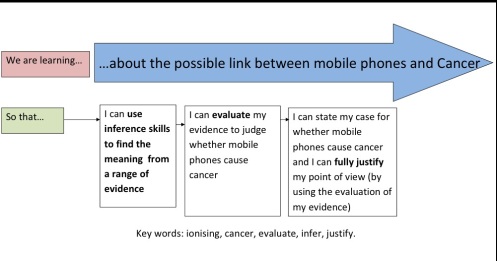
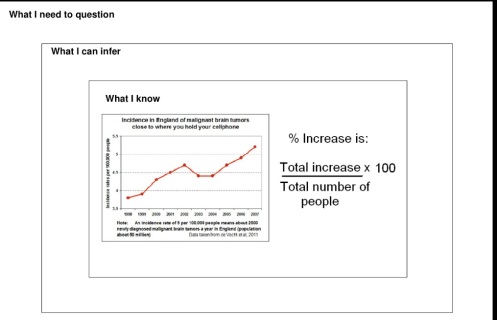
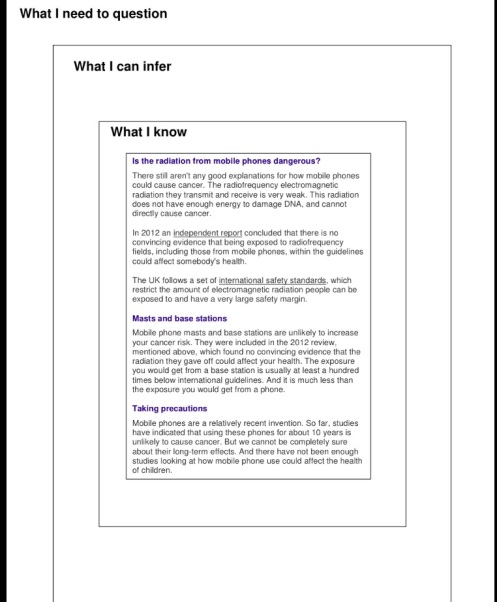
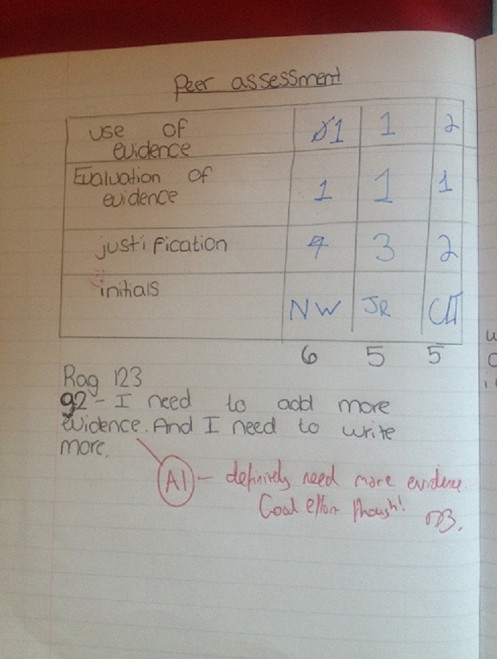
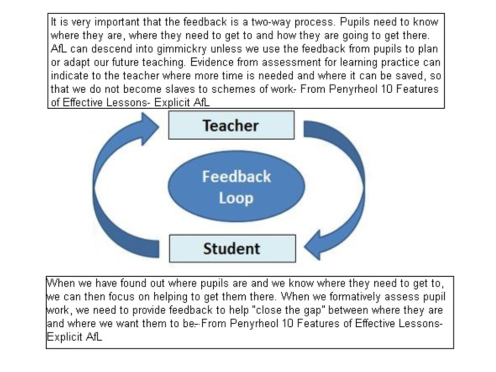
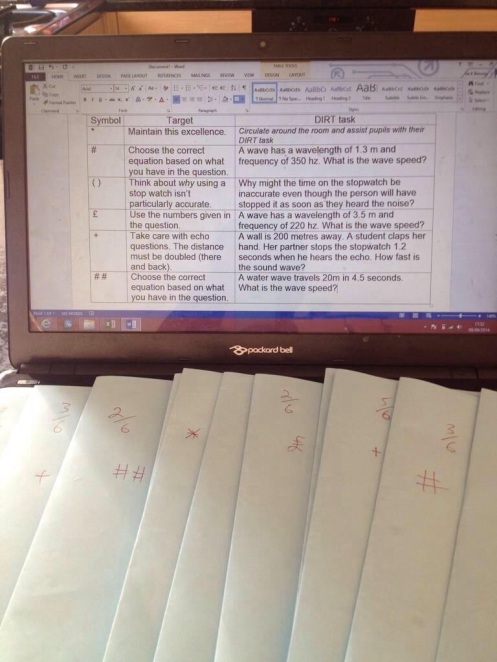
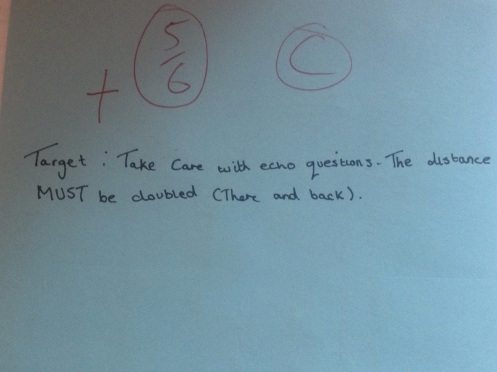
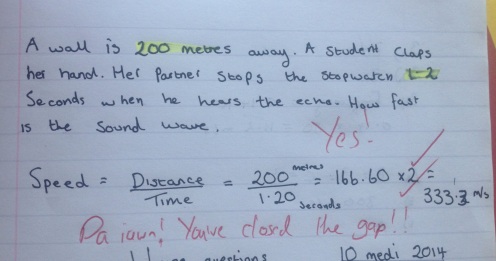
A great post. Thanks for pulling together lots of details and observations.
Many thanks Tim. I appreciate the time taken to read and comment.
Damian